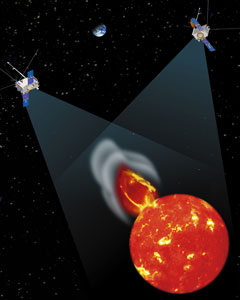The STEREO space mission has two spacecraft. Each spacecraft has a different view of the Sun. Scientists can put together pictures from the two different viewing angles. They can make 3D views of the Sun and of space weather "storms" this way.
Click on image for full size
Image courtesy of NASA/Johns Hopkins University Applied Physics Laboratory.
Solar TErrestrial RElations Observatory (STEREO) Space Mission
STEREO is a NASA
space mission to study the Sun. STEREO stands for Solar TErrestrial RElations Observatory. STEREO also studies huge space weather storms from the Sun called Coronal Mass Ejections (CME).
STEREO blasted off in October 2006. There are actually two STEREO spacecraft that are pretty much twins. After launch, the two spacecraft flew by the Moon on slightly different paths. The Moon's gravity changed the directions the spacecraft. One was flung forward along Earth's orbit around the Sun. The other spacecraft was steered backward along Earth's orbit.
You can see things in 3D because you have two eyes that are a little bit apart. The two STEREO spacecraft can see the Sun and CMEs in 3D because STEREO's "eyes" (the cameras on the two spacecraft) are far apart. Scientists can combine pictures from the two STEREO spacecraft to create 3D stereoscopic images of the Sun.
You might also be interested in:
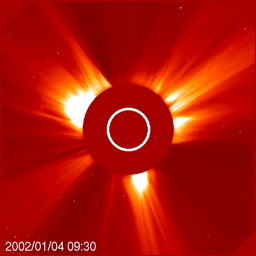
You know that there are all kinds of storms here on Earth - thunderstorms, blizzards, tornadoes, and hurricanes. The Sunalso has storms. There are two different kinds of storms on the Sun. They are called
...more
Have you ever seen an explosion before? Maybe you've seen a volcano explode on t.v. Or maybe you've seen a potato explode in the microwave because your mom forgot to poke holes in it. Well, explosions
...more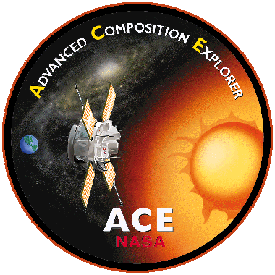
Have you ever wondered what you are made of? Where did the elements come from that make up your body? The elements that make up your body are the same elements found on the Earth. Where did those Earth
...more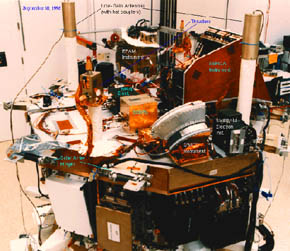
The ACE spacecraft consists of a two-deck irregular octagon, about 1.6 meters (65 inches) across and about 1 meter (40 inches) high. Eight of the scientific instruments which measure a variety of particle
...more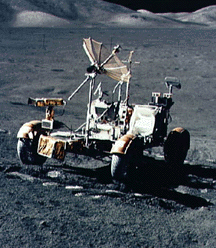
Astronauts Eugene Cernan and Harold Schmitt were the last humans to walk on the Moon, in the final mission of the Apollo space program. Together with Ronald Evans, they lifted off on Dec. 7, 1972 aboard
...more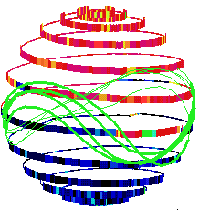
Ulysses is a spacecraft that is traveling around the Sun. Ulysses is orbiting around the top and bottom of the Sun. No other spacecraft has ever done this...so Ulysses gets to measure things no other
...more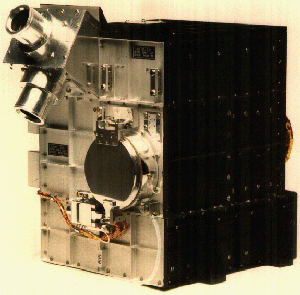
COSPIN is one of the instruments on the Ulysses spacecraft. COSPIN stands for the COsmic and Solar Particle INvestigation. Try saying that fast three times! COSPIN is actually made up of 5 different sensors.
...more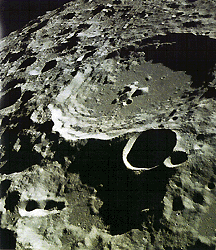
With increased confidence from the success of their Sputnik missions, the Soviet Union launched 24 Luna spacecrafts to the Moon, between 1959 and 1976. 15 were successful, each designed as either an orbiter
...more


